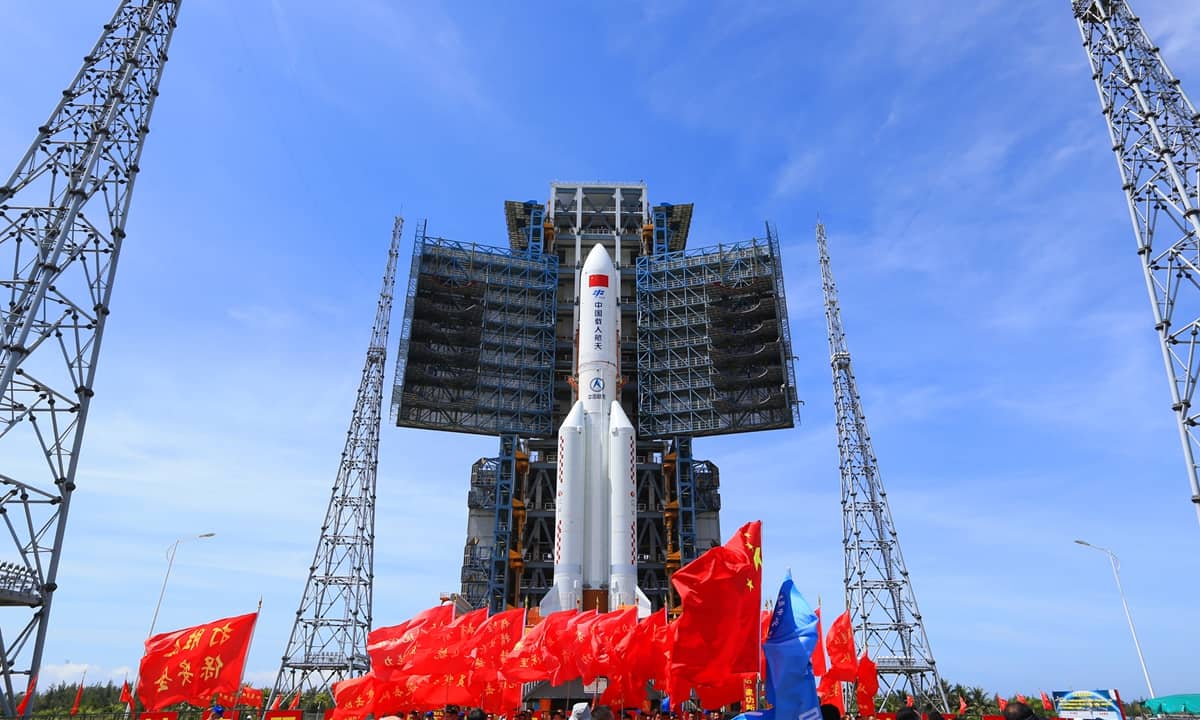Space is a new tourism destination for Chinese tourists
China’s launch startup and tourism group are jointly investigating the space tourism market.

CAS Space, a Chinese launch services company, has signed a cooperation agreement with a massive state-owned travel company, boosting China’s fledgling space tourism efforts. The Beijing-based rocket company CAS Space and the Hong Kong-based China Tourism Group recently signed an agreement to jointly explore and advance the space tourism market.
On July 12, CAS Space, a subsidiary of the state-owned Chinese Academy of Sciences (CAS), made the announcement via its official account on the Chinese social media app WeChat.
The agreement is not exactly unexpected. Last year, CAS Space announced that it is developing a single-stage reusable rocket capable of carrying up to seven passengers for a 10-minute ride above the Kármán line at 100 kilometers (62 miles), which is generally recognized as the boundary between Earth’s atmosphere and outer space.
The design depicted in CAS Space’s renderings has been compared to Blue Origin’s New Shepard suborbital rocket and SpaceX’s Dragon spacecraft.
The first test flight is currently scheduled for 2023, and CAS Space plans to conduct at least 15 test flights prior to transporting its first passengers. Senior company executives concur that the time is right for space tourism to take off.

“With the rapid advancement of space technology, a space tour for average citizens is no longer a pipe dream but is becoming a reality. Space travel will provide tourists with an experience they have never had before “Yang Yiqiang, the founder of CAS Space, told China Daily: (opens in new tab).
In recent years, a number of commercial Chinese launch companies have emerged, including CAS Space. The company is currently preparing (opens in new tab) for its first attempt at orbital launch using the ZK-1A solid rocket from Jiuquan.
Additionally, it faces competition for space tourists. Space Transportation, another Chinese company, is developing a “rocket with wings” for space tourism and point-to-point travel.
Earlier this year, Yang Liwei, China’s first astronaut in space, stated that the country’s space station would be open to paying visitors later in the decade.
China is the world’s largest tourism market
China is the largest tourism market in the world, and with its expanding middle class, it will remain so for decades. To capitalize on this potential growth opportunity, you need a location strategy that takes into account the Chinese travel landscape: how people select their destination, where they go within a destination, and what motivates them to visit. Chinese tourists are among the most sought-after tourists.
In 2019, the contribution of Chinese tourists to global tourism has skyrocketed to the top spot, with 254.6 billion U.S. dollars spent on international travel by these visitors! The number of Chinese travelers who traveled abroad increased from 10 million in 2000 to nearly 169.2 million in 2019.

Approximately 40 percent are male and 60 percent are female. China’s global outbound travel share, which was only 1 percent in 2005, is now projected to reach 20 percent by 2023. 11 percent of Chinese citizens have passports, so you can imagine how large this market will be in five years.
It is no longer sufficient to explain the evolution of tourism in China based solely on the country’s rapid economic expansion over the past decade; the tourism industry’s development is closely tied to the country’s social transformations. In recent years, China’s significant economic growth has caused its currency to appreciate against those of other nations, such as the U.S. dollar and the Euro.
Due to conversion rates between foreign exchange markets, this translates to a higher international purchasing power for these customers, who can now afford goods at much lower prices than if they were priced in Yuan’s home country.
How Chinese tourists make decision?
- Searching
The majority of Chinese tourists begin their travel preparations by searching for information online. And search engines, travel websites, and social networking sites are the most popular among them.
2. Comparison
After the searching, they will compare all the information he found and here in this step, comments from others, news on other online news media and ranking are often taken seriously in consideration.
3. Pay and go travelling
Once decisions are made, they will make the necessary payments and enjoy their trip.
What is our solution?
1. Official website and SEO/SEM
A website in Chinese is the first step to show you in front of customers. And be careful about the design and hosting of the website which are the two main factors influencing the reading experience of visitors.
A nice website without visitors is a waste of budget. And via SEO and SEM, the most efficient solution to get target visitors, you can bring your customers to see your website.
See more about China SEO
2. Social networks
The influence of Internet on Chinese citizens has already become wide and deep. Most time Chinese Internet users spend on Internet is on social networks, like Weibo and WeChat (or WeiXin as it’s called in China).
Communicating on Weibo and WeChat starts by opening an account, obtaining certifications, publishing interesting content, interacting with your potential customers to build a community. Weibo is a very powerful tool; the number of fans can add up quickly and allows you to spread your offer to up to 300 million people according to figures reported on Weibo.
3. Key Opinion Leader Campaign
KOLs (Key Opinion Leader) or stars have the ability to influence a lot of Chinese people with their communities and the secondary network of their fans. These leaders are highly respected and have a strong influence on large numbers of fans. Their movements are followed and talked about by millions of Internet users. More information here
4. PR (Press Relations)
PR campaign in China is very important. It allows you to promote your service to reach a wide variety of Chinese citizens. This communication is primarily with rich visuals or feeds backs and testimonials from people who have visited the country.
5. Viral marketing
The SNS in China allows quick and fast spread of information. And once it turns into a big buzz, netizens in China will have the interest to know more about that and even sometimes media will report that. It can greatly increase the brand awareness in a very short time.
Our case study
MALAYSIA is the 9th largest market worldwide for Chinese tourists for overseas spending. The quick approval of visas is one of the reasons why Malaysia is one of their favorite destinations, and Visa Malaysia is the main online portal. We closely collaborated with the Malaysian Government in order to increase the awareness of the company among Chinese tourists.

PROVENCE PANORAMA is a luxury mini-van transportation company that organizes tours through known and unknown Provence. Today, these tourists have adopted the habit of traveling in a diversified manner. With this rise of Chinese customers in Provence, Provence Panorama, decided to promote this region among Chinese travelers. Because of the culture and language barrier, they could not handle it themselves. So they contacted GMA to help them explore this Chinese market.






